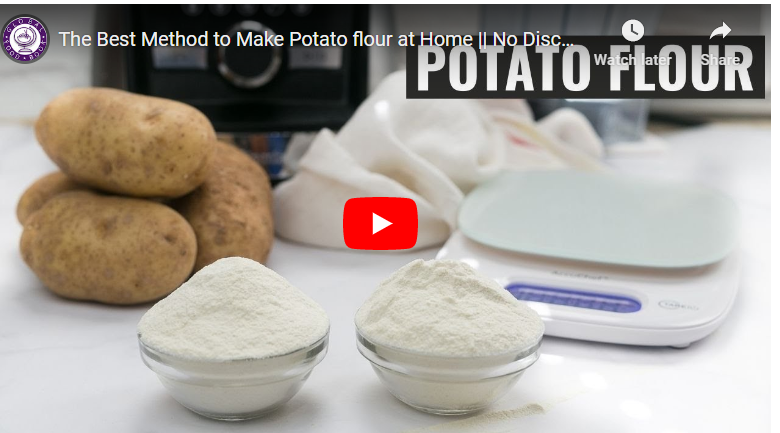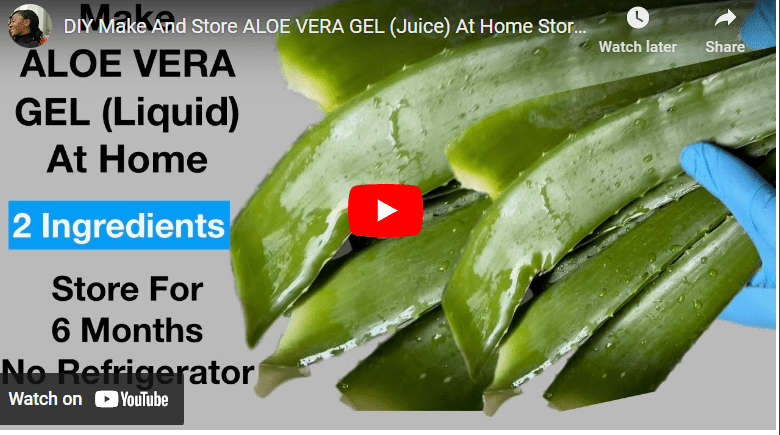If you’re someone who loves beans as a staple ingredient in your kitchen, you’ve likely encountered the frustrating presence of weevils. These tiny pests can find their way into your pantry, infesting your beans and causing damage.
To preserve beans from weevils, ensure that you store them in airtight containers and consider using natural repellents such as bay leaves or dried chilies to deter pests. Regularly inspect and clean the storage area to prevent infestations.
However, worry not! In this step-by-step informative piece, we will equip you with the knowledge and techniques necessary to preserve your beans effectively and keep those pesky weevils at bay.
How to Preserve Beans from Weevils
Understanding weevils is crucial for effectively preventing them from infesting your beans. Weevils are small, brown, or black beetles that have a long snout or rostrum.
Weevils have the ability to reach lengths of up to 6 millimeters and commonly infest stored grains such as beans, rice, wheat, and corn.
These pests are particularly drawn to grains with elevated moisture levels and can enter stored rice through tiny openings or gaps in containers.
Read Also: How To Preserve Spring Onions For Long Time Storage
Once inside, they deposit eggs on the rice, leading to the emergence of larvae that feed on the grains.
As the larvae develop, they inflict considerable harm to the rice by consuming vital nutrients, ultimately diminishing its quality and nutritional content.
To effectively prevent weevils from infesting your rice, it is essential to understand their behavior and life cycle.
Weevils have a lifespan of up to two years and possess a remarkable ability to reproduce quickly.
Read Also: [5 Ways] How to Preserve Yam for Long-Time Storage
They exhibit a preference for warm and humid conditions, thriving in temperatures that span from 10 to 40 degrees Celsius.
#1. Preventive Measures
To protect your beans from weevils and ensure their long-term preservation, it’s essential to implement preventive measures.
By taking proactive steps, you can create an inhospitable environment for weevils and keep your beans safe. Here are some preventive measures you can follow:
Step 1 – Choose Proper Storage Containers
Opt for sealed, airtight containers to store your beans. Make sure the containers are crack-free to prevent weevils from finding their way inside.
This will create a barrier and limit the access of weevils to your precious beans.
Read Also: How To Preserve Vegetables For Long Time Storage
Step 1. Opt for Sealed Containers
Look for storage containers that have airtight seals. These seals prevent weevils from accessing your beans and infesting them. A tight seal creates a barrier that keeps pests out and maintains the freshness of your beans.
Step 2. Check for Crack-Free Containers
Inspect the containers carefully to ensure they are free from cracks or holes. Weevils can easily enter through even the tiniest openings, so it’s crucial to choose containers that are intact and without any vulnerabilities.
Read Also: How To Preserve Tiger Nut For Long Time Storage
Step 3. Consider Material
Choose storage containers made of sturdy materials such as glass, plastic, or metal. These materials provide durability and further protect your beans from external factors that may attract weevils.
Step 4. Size Matters
Select containers that are appropriately sized for your storage needs. It’s best to avoid overfilling the containers as it may lead to a lack of airflow and potential moisture buildup, creating an environment conducive to weevil infestation.
Read Also: How To Preserve Watermelon For Long Time Storage
Step 5. Label and Date
Once you’ve filled the containers with beans, label them with the contents and the date of storage. This will help you keep track of the freshness and rotation of your beans, ensuring you use the oldest stock first.
Step 2 – Control Temperature and Humidity
Weevils thrive in warm and humid conditions, so it’s important to maintain suitable storage conditions.
Keep your storage area cool and dry, ideally between 10 to 15 degrees Celsius with a humidity level of around 50%. This will discourage weevils from infesting your beans.
Read Also: How To Preserve Sweet Potatoes For Long Time Storage
Step 3 – Regularly Inspect and Clean Storage Areas
Conduct routine inspections of your storage areas to check for any signs of weevil activity. Remove any spilled beans or debris that may attract pests.
Clean the storage containers and shelves thoroughly to eliminate any potential hiding spots for weevils.
#2. Consider Freezing Beans
Freezing is an effective preventive measure to kill any potential weevil eggs or larvae present in your beans.
Before storing your beans, place them in airtight bags or containers and freeze them for at least 48 hours.
This will halt the development of weevils and ensure your beans remain weevil-free.
Read Also: How To Preserve Ripe Plantain For Long Time Storage
#3. Treatment Options for Infested Beans
If you discover a weevil infestation in your beans, it’s important to take immediate action to eliminate the pests and salvage the remaining beans.
Here are some treatment options you can consider:
#1. Isolate and Discard Infested Beans
Separate the infested beans from the unaffected ones to prevent further spread of the weevils. Discard the infested beans by sealing them in a bag and disposing of them in an outdoor trash bin.
Be careful not to contaminate other areas with the infested beans.
Read Also: How To Preserve Rice from Weevils
#2. Freezing or Heating Beans
Weevils and their eggs can be eliminated by subjecting the beans to extreme temperatures. You can choose between freezing or heating methods:
- Freezing: Place the unaffected beans in airtight bags or containers and freeze them for at least 48 hours. This will kill any weevil eggs or larvae present in the beans.
- Heating: Alternatively, you can heat the beans by spreading them on a baking sheet and placing them in an oven preheated to 60 degrees Celsius for about 30 minutes. This heat treatment will effectively eliminate the weevils and their eggs.
#3. Natural Deterrents
Use natural deterrents to repel weevils and discourage future infestations:
- Bay Leaves: Place dried bay leaves in your storage containers or bags of beans. The strong aroma of bay leaves acts as a natural deterrent, keeping weevils at bay.
- Neem Leaves: Neem leaves have insect-repellent properties. Place a few dried neem leaves in your storage area or with the beans to deter weevils.
#4. Regular Maintenance and Monitoring
To ensure the long-term preservation of your beans and prevent weevil infestations, it’s essential to incorporate regular maintenance and monitoring practices.
Follow these steps to keep your beans safe:
#1. Periodically Check for Signs of Weevil Activity
Set a schedule to inspect your stored beans for any signs of weevil activity. Look for small holes, punctures, or the presence of weevils themselves.
Conduct these checks every few weeks to catch any infestations early on.
#2. Rotate Beans and Use the Oldest Stock First
Practice proper stock rotation by using the oldest beans first. This helps ensure that beans are consumed before they have the chance to become infested.
When replenishing your supply, place new beans behind the older ones to maintain a first-in, first-out system.
#3. Maintain a Clean and Organized Storage Area
Keep your storage area clean and tidy. Regularly sweep or vacuum the area to remove any spilled beans or debris that could attract pests.
Ensure that storage containers and shelves are wiped clean and free from residual beans or moisture.
Signs Of Weevil Infestation In Beans
When it comes to preserving your beans from weevils, it’s important to be aware of the signs that indicate a weevil infestation.
By being able to identify these signs, you can take immediate action to protect your beans. Be watchful and ensure that you follow these indicators:
#1. Small Holes
Inspect your beans closely and look for small holes on their surface. Weevils create these holes when they bore into the beans to lay their eggs. These tiny openings are a clear indication of weevil activity.
#2. Punctures
Look for punctures or indentations on the beans. Weevils use their snouts to pierce the beans and feed on them. These punctures can be a telltale sign of weevil infestation.
#3. Presence of Beetles
Keep a lookout for small brown or black beetles among your beans. Weevils have a distinct appearance, with a long snout and a compact body. If you spot any of these beetles crawling around your beans, it’s a strong indication that there is a weevil infestation.
Identifying Weevil Infestation
When it comes to preserving your beans from weevils, it’s crucial to be able to identify signs of weevil infestation.
By recognizing these indicators early on, you can take immediate action to prevent further damage.
Here’s how you can identify a weevil infestation in your beans:
#1. Inspect for Small Holes and Punctures
Take a closer look at your beans and examine them for small holes or punctures on their surface. Weevils create these openings when they burrow into the beans to lay their eggs.
#2. Keep an Eye Out for Beetles
Weevils themselves are small, brown, or black beetles with a distinct long snout. Watch for any movement among your beans and be on the lookout for these tiny pests crawling around.
#3. Check Expiration Dates
Before purchasing beans, always check the expiration date on the packaging. Older beans are more likely to be infested by weevils, so it’s important to choose beans with a longer shelf life.
Benefits of Preserving Beans from Weevils
I. Improved Food Safety
- By preserving beans from weevils, you ensure that the beans are free from contamination and safe for consumption.
- Weevils and their larvae can carry bacteria, fungi, or other pathogens, which can pose health risks if consumed.
II. Extended Shelf Life
- Proper preservation techniques help prolong the shelf life of beans, allowing you to store them for longer periods without spoilage.
- This reduces food waste and allows you to have a readily available supply of beans whenever needed.
III. Cost Savings
- Preserving beans from weevils helps protect your investment in purchasing bulk quantities of beans.
- By preventing weevil infestations and subsequent spoilage, you avoid the need to discard large amounts of contaminated beans, saving money in the process.
IV. Nutritional Value Preservation:
- Weevils can compromise the nutritional value of beans by consuming their nutritious components.
- Preserving beans from weevils ensures that the beans retain their nutritional integrity, providing you with a healthy source of protein, fiber, and other essential nutrients.
V. Versatile Use of Beans
- Preserved beans offer versatility in cooking, as you can incorporate them into various recipes and meals.
- With a stock of preserved beans, you have the flexibility to prepare soups, stews, salads, side dishes, and more, without worrying about weevil contamination.
Importance of Preserving Beans from Weevils
I. Food Security
- Preserving beans from weevils helps ensure a stable food supply, especially during times of scarcity or emergencies.
- By preventing weevil infestations, you safeguard your bean reserves, contributing to food security for yourself and your family.
II. Preservation of Resources
- Preserving beans from weevils reduces waste by avoiding the need to dispose of contaminated beans.
- This contributes to the efficient use of resources, such as water, energy, and agricultural inputs used in bean production.
III. Maintaining Quality
- Preserving beans from weevils allows you to maintain the quality of the beans, including their taste, texture, and overall appeal.
- Quality beans are more enjoyable to eat and can enhance the overall dining experience.
IV. Economic Impact
- For farmers and producers, preserving beans from weevils is crucial for maintaining the quality and market value of their products.
- By protecting beans from weevil infestations, farmers can sell their produce at higher prices, ensuring their economic sustainability.
V. Health and Well-being
- Preserving beans from weevils promotes good health and well-being by providing safe and nutritious food options.
- Consuming weevil-free beans reduces the risk of ingesting harmful substances and promotes a healthy diet.
How to Preserve Beans from Weevils Guide
Preserving beans from weevils is essential to maintain their quality and prevent contamination. Follow these steps to preserve beans from weevils:
- Inspect Beans: Before storing beans, carefully examine them for signs of weevil infestation, such as small holes, punctures, or the presence of weevils. Discard any infested beans to prevent the spread of weevils to other batches.
- Clean and Dry: Thoroughly clean the beans to remove dirt, debris, and potential eggs or larvae. Rinse the beans with water and allow them to air dry completely before proceeding to the next step.
- Choose Suitable Storage Containers: Select airtight containers, such as glass jars, plastic containers, or food-grade bags, to store the beans. Ensure that the containers are clean, dry, and free from cracks or openings that could allow weevils to enter.
- Add Natural Repellents: Include natural repellents like bay leaves, neem leaves, or cloves in the storage containers. These aromatic ingredients help deter weevils from infesting the beans.
- Store in a Cool and Dry Place: Find a cool, dry, and well-ventilated area to store the beans. Avoid exposing them to direct sunlight, high humidity, or extreme temperature fluctuations, as these conditions can promote weevil infestations.
- Regular Inspection: Periodically check the stored beans for any signs of weevil activity. If you notice any infestation, remove the affected beans and take appropriate measures to prevent further spread.
How Do Weevils Get Into Beans
Weevils can find their way into beans through various means. Here are some common ways weevils may enter beans:
- Contaminated Packaging: Weevils can be present in the packaging of beans, especially if it is not properly sealed or stored in a weevil-infested environment. They can easily crawl into bags or containers, gaining access to the beans.
- Infested Storage Areas: If beans are stored in areas where weevils are present, such as warehouses or storage facilities with previous weevil infestations, the pests can easily contaminate the beans. Weevils can enter through cracks, openings, or improperly sealed containers.
- External Sources: Weevils can also enter beans from external sources, such as pests or insects that carry weevil eggs. These eggs can be deposited on the beans during transportation, handling, or storage.
To prevent weevils from getting into beans, it’s crucial to follow proper storage practices, including inspecting and cleaning the beans before storage, using airtight containers, and maintaining a clean storage area.
How to Cook Beans with Weevils
While it’s generally recommended to discard beans infested with weevils, if you choose to cook beans with weevils, follow these steps:
- Sorting: Thoroughly inspect the beans and separate the weevils and infested beans from the rest. Discard the infested beans and weevils.
- Rinse and Soak: Rinse the remaining beans under running water to remove any remaining debris. Soak the beans in water for several hours or overnight to soften them and make them easier to cook.
- Cook Thoroughly: Transfer the soaked beans to a pot, cover them with water, and bring to a boil. Reduce the heat and simmer until the beans are fully cooked and tender. Cooking at high temperatures will ensure that any remaining weevil larvae are killed.
- Strain and Serve: Once the beans are fully cooked, strain them to remove any remnants of weevils. You can now use the cooked beans in various recipes, such as stews, stews, salads, or bean-based dishes
How to Preserve Beans Powder
Preserving bean powder is similar to preserving whole beans. Follow these steps to ensure the longevity and quality of your beans powder:
- Select High-Quality Beans: Start with good-quality beans for making the powder. Choose beans that are fresh, free from mold or infestation, and properly cleaned.
- Dry Beans Thoroughly: Spread the beans in a single layer on a clean, dry surface. Allow them to air dry completely for several days or use a food dehydrator to speed up the drying process. Ensure that the beans are fully dry to prevent moisture and mold growth during storage.
- Grind into Powder: Use a blender or a grinder to grind the dried beans into a fine powder. Process small batches at a time to achieve a consistent texture. Sieve the powder to remove any larger particles and ensure a smooth consistency.
- Store in Airtight Containers: Transfer the beans powder to clean, airtight containers, such as glass jars or food-grade plastic containers. Ensure that the containers are dry and properly sealed to prevent moisture and weevil infestation.
- Store in a Cool and Dark Place: Find a cool, dry, and dark storage area to preserve the beans powder. Avoid exposing it to direct sunlight, heat, or humidity, as these factors can degrade its quality over time.
- Regularly Check for Signs of Spoilage: Periodically inspect the beans powder for any signs of mold, off-putting odors, or discoloration. If you notice any of these signs, discard the powder to prevent consumption of spoiled product.
Conclusion
Preserving beans from weevils is crucial for maintaining food safety, extending shelf life, and protecting nutritional value. By implementing proper storage techniques, regular inspection, and preventive measures, you can safeguard your beans from weevil infestations, ensuring a fresh and uncontaminated supply for your culinary needs.




Thanks alot for the info.
You’re welcome Richard